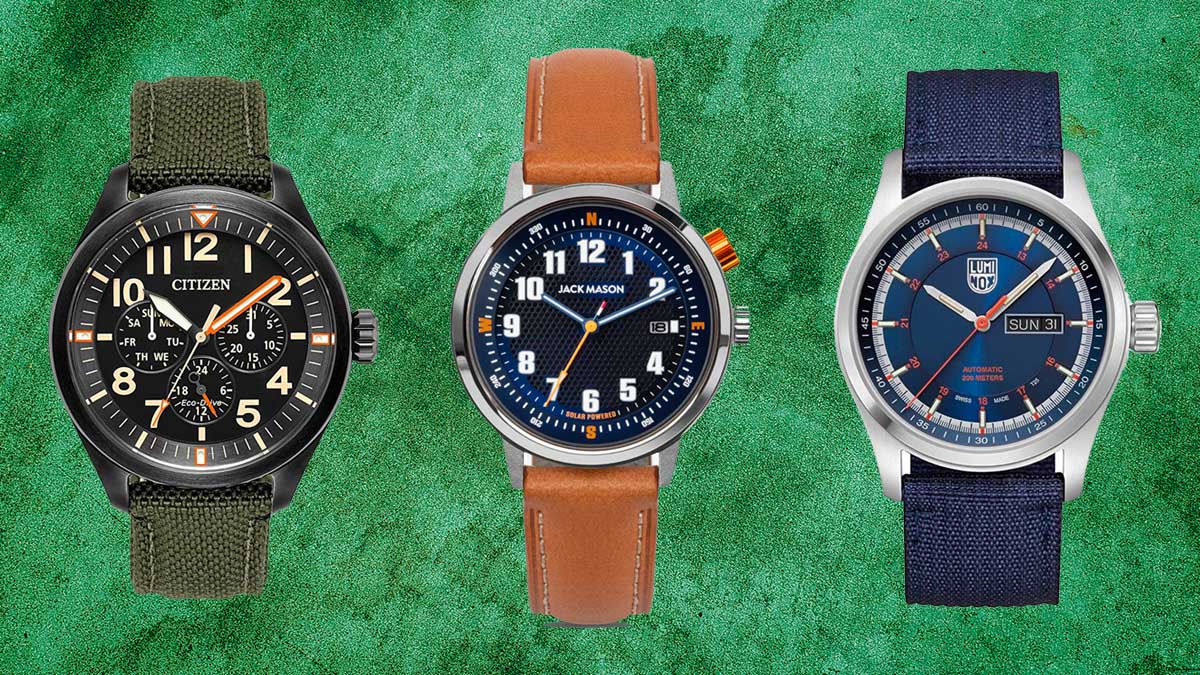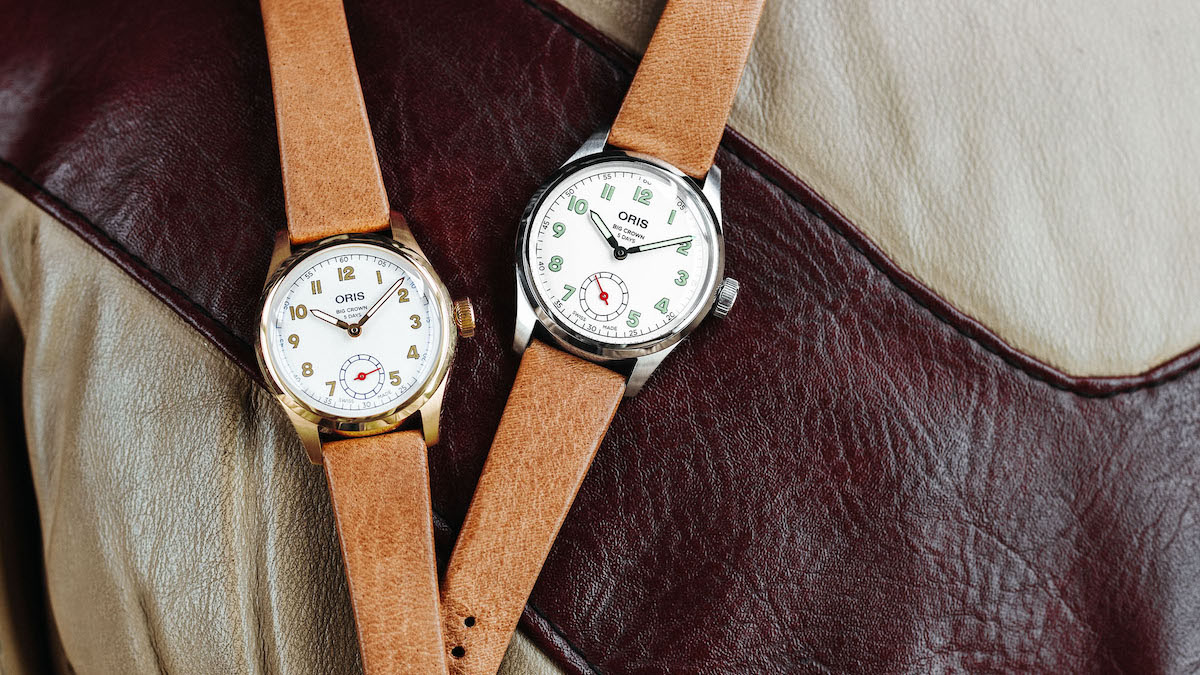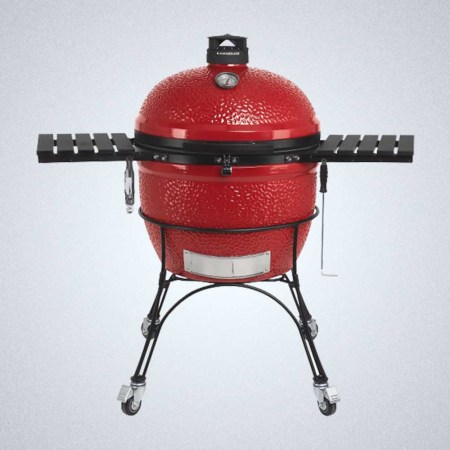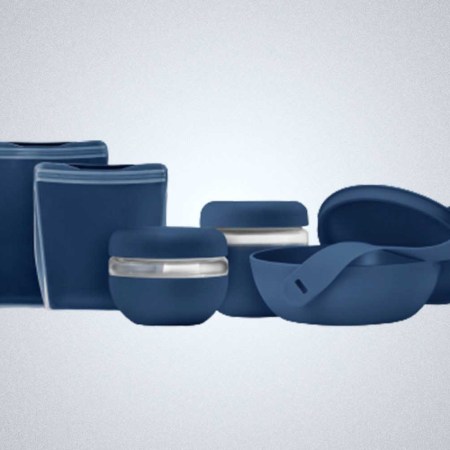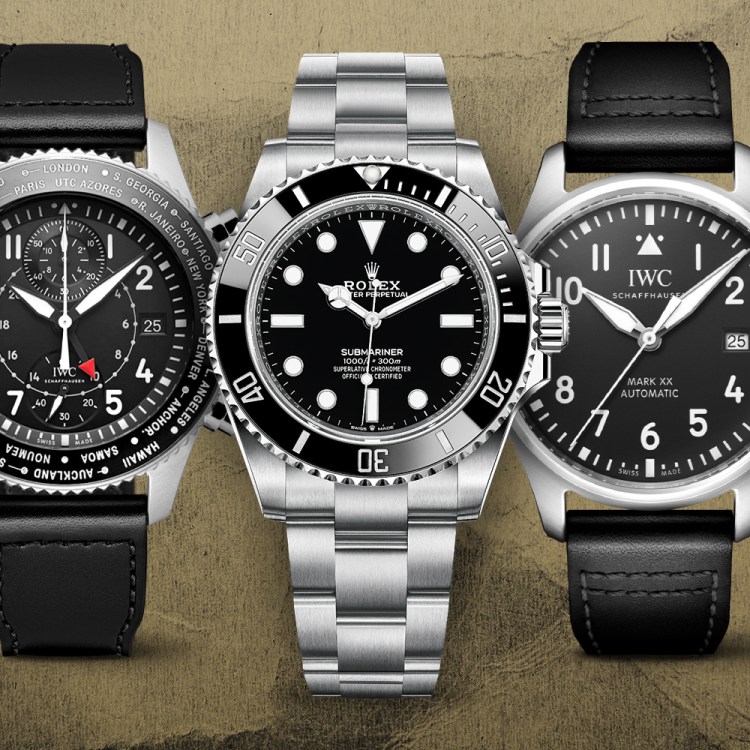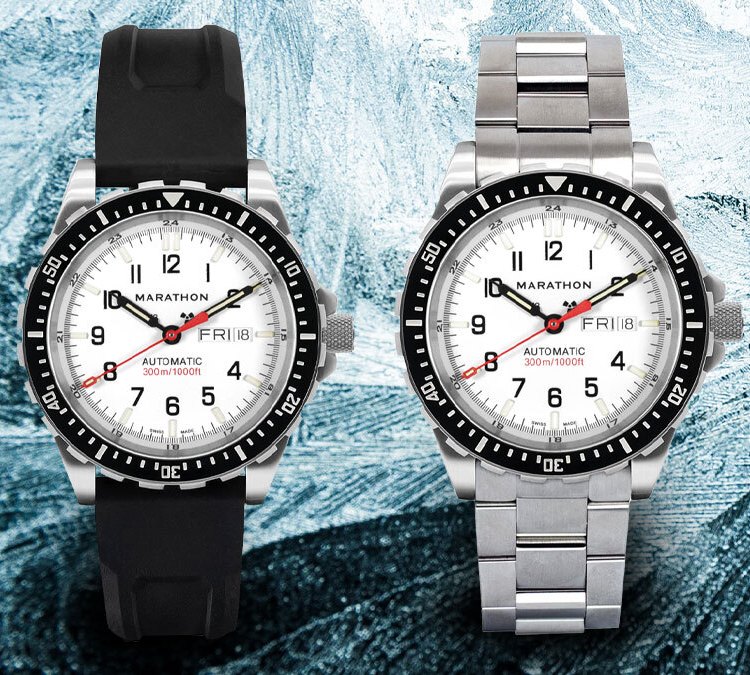Nota bene: If you buy through the links in this article, we may earn a small share of the profits.
Back in the days when Nick Nolte and Robert Shaw were ogling Jacqueline Bisset in a skimpy wet T-shirt on the set of The Deep, an excellent dive watch was essential — for actual self-preservation-related reasons.
Because before there were dive computers, a timepiece that could go deep was a reference instrument that helped seagoers avoid getting bent (i.e, develop decompression sickness).
But a dive watch is also about, you know, looks. (See: Bond, James.) Watches are the quintessential piece of men’s jewelry, and a dive watch is like a tag that says, “I swim with sharks and in the bowels of shipwrecks.” (Or something.) So the best examples of dive watches should be as handsome as they are functional.
All of the watches listed below have unidirectional rotating bezels (to set and calculate elapsed dive time or decompression stops) and some form of luminescence — the latter being helpful in seeing the dial in murky water, dark places or during night dives. As for depth ratings, since even the most hardcore technical diver rarely ventures below 350 feet, even a 100-meter (330-ft.) rating is sufficient for all but the most arduous plummets. (FYI, the ISO 6425 standard for dive watches necessitates a 100-meter minimum water resistance rating.) Still, higher ratings indicate a watch that can handle more pressure, which in turn is a good indicator of general toughness.
What to Look for in a Dive Watch
Size: Case diameter isn’t the only indicator of how a watch will wear — the lug-to-lug width, from the top of the top lug to the bottom of the corresponding lower lug, will determine how well the case sits on your wrist. TL;DR: It’s always better to try something on in person before pulling the trigger. And if you want a dive watch to pass muster for post-SCUBA dinner, pick something on the smaller size, probably between 39-42mm. (Also pay attention to case thickness, which will determine whether the watch will fit under a cuff.)
Movement Type: Most dive watches these days are either automatic — meaning they’re wound while you wear them — or quartz-powered, meaning they require batteries to run. Batteries need replacing, while automatic movements need servicing every so often, so there’s sort of a trade-off. (There are also hybrid movements, such as Grand Seiko’s Spring Drive, that combine these technologies.) What kind of movement your watch has really does come down to personal choice.
Visibility: You know what you don’t want underwater, while you’re trying your best not to drown? A black dial with black hands and black markers. (It’s a thing these days.) Make sure your watch has a dial with some contrast to it, and that it features sufficient luminescent material. A sparse dial with highly lumed markers and hands, such as those on any watch based upon the Rolex Submariner, is a sure bet, but a digital watch with a button-set illuminator, such as a G-SHOCK, also works.
Water Resistance: Technically, at least according to ISO standards, a true dive watch needs at least 100m of water resistance. In practice, 100m is more than enough, as most recreational divers never venture much beyond 40m, anyway. More than that is perfectly great, and less than 100m is generally to be avoided.
Crystal Type: Some sub-$1,000 watches will use mineral crystal, while it’s rare to encounter acrylic crystal on anything that isn’t vintage these days. Mineral will scratch easier than sapphire, while sapphire is largely unscratchable, but if it does get seriously banged up, will likely need to be replaced. (The good news is that sapphire crystals are standard on all but the least expensive watches these days.)
Key Terms
Bezel: The ring, often inscribed with numbers 1-60, that surrounds the dial on a dive watch. These days, this ring — which is often made of steel and topped with an aluminum, ceramic, or sapphire glass insert — is unidirectional and can only turn counter-clockwise. This is a safety measure: Because the bezel is used to calculate elapsed time, one can thus only overestimate air consumption, bottom time, etc, and thus have to surface from a dive early. (Otherwise, one might think there’s more air left in a tank than there actually is.) The bezel on a dive watch is also called a “count-up” bezel, as the numbers increase from 1-60 in a clockwise direction.
Bracelet: The piece that attaches the watch “head” to your wrist. This could be a metal bracelet, or a strap made of rubber, nylon, leather, or another material. (Leather straps shouldn’t be used underwater, however.) Certain watch bracelets, such as the Rolex Oyster used on the contemporary Submariner, have special claps that allow them to expand and fit over a wetsuit.
Crown: The round piece protruding from a watch case — often, though not always, on the right — that is used to set the time, date, and possibly other functions. On certain automatic watches, it can also be used to manually wind the movement. And on dive watches, it generally screws down to prevent water incursion into the watch case.
Crystal: The glass that covers the dial, this piece was made of acrylic for many decades. On certain less expensive watches, it’s made of mineral crystal, but these days, most divers feature a sapphire crystal. (Acrylic scratches easily but is easy to buff out; sapphire is basically scratch-proof. Mineral is somewhere in between.)
Dial: The part of the watch that tells the time, containing the markers and the hands. Also called a watch “face” — though “dial” is the word that’s used within the industry.
Helium Escape Valve: In the 1960s, saturation divers — those living at depth for extended periods of time in order to perform work on, say, oil rigs — found that upon decompression, the helium molecules that had built up inside their watches would pop the crystals off as they expanded. As a result, brands like Rolex and Doxa developed a valve that would allow these molecules to escape without affecting the watch crystal. Certain manufacturers still include this tech on certain watch models — though the use case for them is incredibly tiny.
Lume: A term that encompasses the different types of luminescent material used to make a watch dial glow at night or in murky conditions. In the 1940s and 1950s, this material was still radium — a wildly radioactive compound. It was replaced with tritium in the 1960s, which was much less dangerous to handle. Eventually, in the late 1990s and early 2000s, non-radioactive LumiNova was used. These days, the compound used most frequently is Super-LumiNova, though certain companies have proprietary compounds, and a few even used tritium contained in small glass “microtubes.”
Markers: Also called indices, these are the bits on the dial that indicate numbers 1-12. Sometimes, such as on a Rolex Submariner, they’re round “plots,” while on other watches, they’re Arabic numerals, Roman numerals, or a mix of all of the above. On dive watches, they’re almost always coated in luminous material. Markers can be painted or applied physically to the dial.
Movement: The engine that makes the watch run and tell time. This could be mechanical, requiring hand-winding each day or every several days — though dive watches are almost never hand-wound; automatic, in which a small oscillating weight winds the watch while it’s being worn; or quartz, meaning a battery powers a tiny quartz crystal that regulates the timekeeping. (There are certain hybrid systems that meld these technologies together, but these three are most common.)
Water Resistance: Most modern dive watches adhere to the ISO 6425 standard and feature at least 100m of water resistance. (Many feature 200m or even 300m of water resistance.) In practice, 100m is plenty, as most recreational divers don’t venture past 40m in depth. Interestingly, many watch companies used to use the term “waterproof,” but this is no longer the case, and no timepiece can fully be considered 100% resistant to water incursion. (At some depth, it will fail.)
The Best Dive Watches Under $1,000

Orient Kano
Almost laughably good value for the money, Orient’s Kano provides a 44mm stainless steel case, 200m of water resistance, a matching steel bracelet with with micro-adjustment, a highly legible, handsome blue dial with a day-date display, and an automatic movement with hacking, quick-set day and date setting, and manual winding — all for under $200. How does the brand achieve this, you might ask? Orient is owned by Seiko, a completely vertically integrated manufacture. Economies of scale make for affordable watches. (You’re welcome.)
- Diameter: 44mm
- Movement: Orient automatic
- Water Resistance: 200m

Citizen Promaster Diver
This stainless steel fan-favorite from Japanese megabrand Citizen is tough to beat for the money. Utilizing the brand’s proprietary Eco-Drive technology, it’s powered by light, meaning the battery rarely (if ever) needs to be replaced. Water resistant to 200m and sized at 44mm, it’s a serious (albeit affordable) tool watch that even ships on a rubber dive strap, and in a waterproof box. While it won’t necessarily pull double duty as a dressier watch and pair well with a dinner jacket — a la James Bond’s Rolex Submariner in Dr. No — it’ll be more than sufficient for even the most hardcore adventure seekers.
- Diameter: 44mm
- Movement: Eco-Drive
- Water Resistance: 200m

Dan Henry 1970 Automatic Diver
Damn if Dan didn’t build one of the best values in modern dive watches. The 1970 — which is available in both 40mm and 44mm versions, with the date or without, for nearly the same price — is based on vintage “Super Compressor” models. This case featured an inner rotating bezel controlled via a second crown, and a special design that became more water resistant as the wearer dove further and the depth increased. Though the case on the 1970 doesn’t include this latter feature, it’s still water resistant to 200m, and does include the inner bezel and dual crowns — plus an automatic Seiko movement.
- Diameter: 40mm or 44mm
- Movement: Seiko NH35 automatic
- Water Resistance: 200m

Seiko SRPE03 “King Turtle”
Seiko’s “Turtle” dive watches are favorites of the watch collecting community. Affordable, robust, funky-looking…they simply check all the boxes. The newer “King Turtle” models retain the older models’ rough dimensions — 45mm wide x 13mm tall — but add several upmarket touches in the form of a sapphire crystal with a magnifier, a bezel with better purchase and a ceramic insert, and a dial with a cool “waffle” pattern. Powered by the automatic Seiko 4R36 movement and water resistant to 200m, the SRPE03 is available in black on a matching steel bracelet, or in khaki green on a rubber dive strap. Either way, you can’t go wrong.
- Diameter: 45mm
- Movement: Seiko 4R36 automatic
- Water Resistance: 200m

Yema Superman Heritage
Man, is it tough to argue with a watch from Yema. The French brand has been producing military-grade watches — and we mean that literally, as its products have been used by the French military for decades — at affordable prices since 1948. The Superman Heritage, based upon the company’s dive watch platform, offers a 39mm stainless steel case, a handsome dial with a date window, a robust, Swiss-made quartz movement, a matching steel H-link bracelet with a diver’s extension, and 200m of water resistance, all for under $500. Prefer an automatic Yema diver? Those start at just $749.
- Diameter: 39mm
- Movement: Swiss quartz
- Water Resistance: 200m

Baltic Aquascaphe
Baltic, based in France, is one of the most beloved of the “microbrands” to have cropped up within the past 10 years. Their watches, though vintage-inspired, aren’t direct copies of any particular references, lending them a wide appeal — and their pricing, which often clocks in at below $1,000, doesn’t hurt, either. The 39mm Aquascaphe in steel is perhaps one of the brand’s best offerings. Water resistant to 200m, automatic, and featuring a simple, gorgeous dial in one of several colors, it’s a no-frills love letter to the early days of SCUBA. Best of all, you can get it on a rubber strap or a steel “beads of rice” bracelet. (A slightly more expensive titanium model is also available.)
- Diameter: 39mm
- Movement: Miyota 9039 autoamtic
- Water Resistance: 200m

Unimatic U1 Classic
Italian brand Unimatic is just a few years old, but the industrial design chops of its two founders are put front and center in the company’s popular, minimalist releases, special editions of which tend to sell out in just a few hours. The U1 Classic is one of Unimatic’s greatest hits: Measuring 40mm in steel and paired to a simple black NATO strap, it’s an exercise in minimalism in which all but the most necessary timekeeping elements are eliminated. The unidirectional dive bezel is naked save for a single, lumed pip at 12 o’clock, while the dial features only an outer minute track, brightly lumed indices reminiscent of those on a Tudor Submariner, a highly visible sword handset, and, well…that’s it. Powered by the workhorse automatic Seiko NH35 caliber, it’s a hell of a watch for the money, and one that’s sure to earn you nods of street cred with novices and horological aficionados alike.
- Diameter: 40mm
- Movement: Seiko NH35 automatic
- Water Resistance: 300m

Tissot Seastar 1000 Powermatic 80
As part of the Swatch Group, Tissot has access to advanced movement technology that it can offer for unbeatable prices. Take the Seastar 1000 Powermatic 80, for example: Cased in stainless steel and water resistant to 300m, it’s powered by the automatic Powermatic 80.111, a caliber with an impressive 80-hour power reserve. A handsome dial with oversized, lume-filled sword hands, a matching, blue ceramic bezel and a handy date window combine with a brushed and polished Oyster-style bracelet with a diver’s extension to give the wearer all he or she needs for a successful day in the water. (The bracelet, by the way, features a quick-release system, meaning one can easily switch it out for rubber or a NATO if desired.)
- Diameter: 43mm
- Movement: ETA Powermatic 80
- Water Resistance: 300m

Marathon MSAR Quartz
Marathon is a family-owned Canadian watch company whose wares have been supplied to militaries around the world since World War II. The firm’s MSAR, a 36mm, quartz-powered version of its larger automatic divers, is almost stupidly tough. With a large, knurled crown, tritium gas tube illumination, a fully graduated, unidirectional dive bezel, and a black rubber dive strap, this baby is good down to 300m. So whether you’re not conducting underwater demolitions or simply going for a swim on vacation, you can be reasonably assured that the MSAR will be up to the task.
- Diameter: 36mm
- Movement: ETA F06 quartz
- Water Resistance: 300m

Casio G-SHOCK Frogman GWF-D1000B-1JF
The truth of military watches in the 21st century is that the majority of them are G-SHOCKS, so get over your “Mil-Sub” fantasy before it costs you $250,000. One of the best for diving is the Frogman, and though it’s significantly more expensive than your average G-SHOCK, it’s worth every penny given the feature set: A triple sensor offers a depth gauge, a water temperature thermometer, a compass, a tide graph and log, a dive log, and much more. Automatic radio reception combines with a world time function to provide the time in 48 different cities, while Tough Solar means that any ambient light will power the watch. In short, this Frogman is the best thing for dive timing short of a dedicated dive computer.
- Diameter: 53.3mm
- Movement: Tough Solar quartz
- Water Resistance: 200m

Doxa SUB 200
Doxa has been making serious dive watches with serious water resistance for decades, but lately, the brand has expanded its offerings into models that slim down its famously large cushion cases somewhat but retain the unique design language that makes a Doxa an unmistakable watch. The SUB 200, unveiled in 2019, features a 42mm steel cushion case, 200m of water resistance, a sapphire crystal, an automatic Swiss movement with 38 hours of power reserve, a stainless steel “beads of rice” bracelet, and a handsome dial with applied indices and a date wheel, all for just about $1K. Best of all, it’s available in Doxa’s famously fun array of colors — seven of ‘em, to be exact.
- Diameter: 42mm
- Movement: ETA 2824-2 automatic
- Water Resistance: 200m

Hamilton Khaki Navy Scuba Auto
While Hamilton’s Khaki Navy Scuba line certainly isn’t reinventing the wheel, what it is doing is offering classic dive watch aesthetics with a Swiss movement at a price that will stop you in your tracks. Available in several different dial colors — and in a quartz-powered version, should you so desire — it features a 43mm stainless steel case, an impressive 300m of water resistance, and the Hamilton H-10 movement with 80 hours of power reserve. A stainless steel bracelet with a butterfly clasp seals the deal, but it’s really the handsome dial, with its outer 1/5th-seconds track, applied indices and inner 24-hour track, that makes this offering stand out from the crowd.
- Diameter: 43mm
- Movement: Hamilton H-10 automatic
- Water Resistance: 300m
We've put in the work researching, reviewing and rounding up all the shirts, jackets, shoes and accessories you'll need this season, whether it's for yourself of for gifting purposes. Sign up here for weekly style inspo direct to your inbox.

